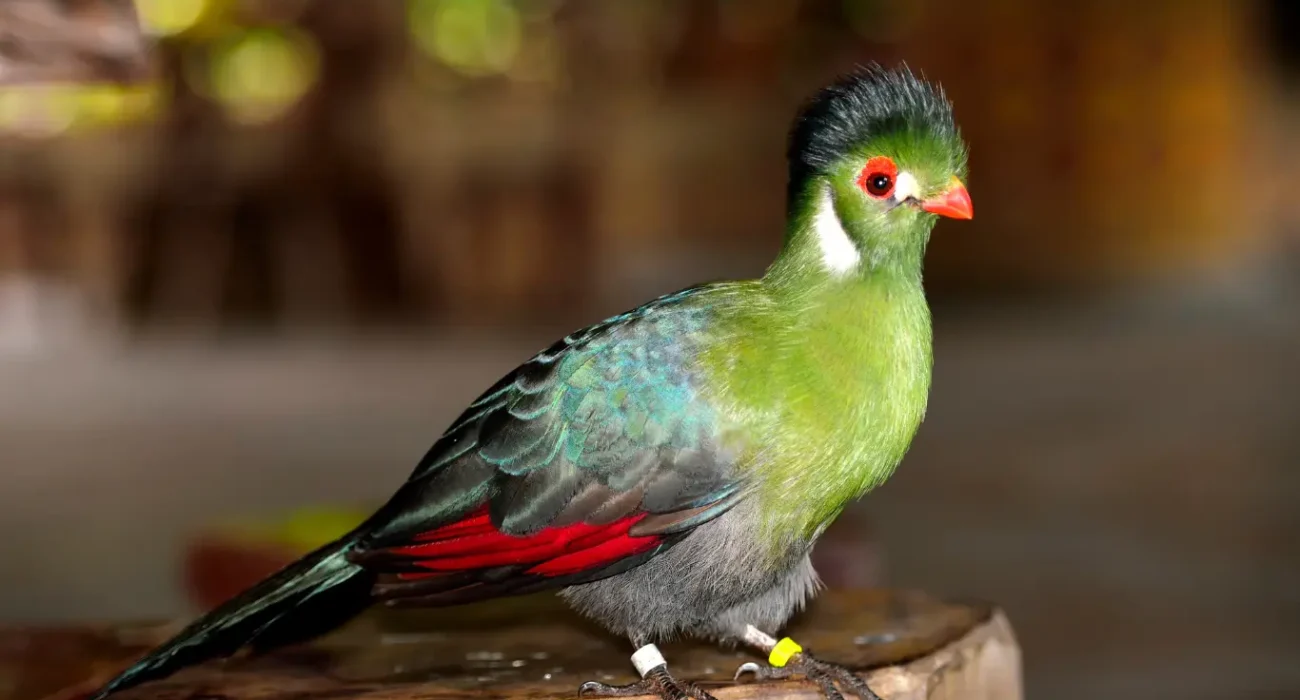20 World’s Most Beautiful Birds That Will Leave You Spellbound
Birds are nature’s works of art. They have beautiful colors, incredible feathers, and lovely songs. These capture the hearts of birdwatchers, nature lovers, and animal lovers. From the shiny feathers of a peacock to the bright colors of a macaw, these birds remind us of nature’s beauty. In this blog post, we will show you some of the most beautiful birds from around the world.
You will learn what makes them unique. You will also learn about the importance of their feathers. Finally, we will explain why they are so captivating. Let’s dive into the world of stunning bird beauty.
The Majesty of Beautiful Birds
Significance of Plumage and Coloration
Bird feathers are not just for looks. They are important for survival. Bright and varied colors show that a bird is healthy and strong, making it more attractive to potential mates. In many species, male birds have vivid colors to attract females, while female birds have subtle colors to stay hidden from predators.
The bright colors and patterns of feathers can scare away predators. Some birds use striking colors to surprise predators, giving them a chance to escape.
Unique Features and Adaptations
Many birds have unique features that help them survive. For instance, the peacock’s stunning tail scares off predators, and a hummingbird’s iridescent feathers bend light and create changing colors.
Birds like the Kingfisher have special beaks for catching prey, which adds to their striking appearance. The Victoria Crowned Pigeon has a fancy crest, making it one of the most regal-looking birds in the world.
Criteria for Selection
Visual Appeal
Bright and varied colors are important when we talk about beautiful birds. Birds like the Mandarin Duck and the Scarlet Macaw have incredible colors. Special patterns and marks add to their appeal, like those on the Atlantic Puffin’s beak.
Rarity and Endemic Nature
Uniqueness adds extra interest to many birds. Birds found only in certain places, like the Resplendent Quetzal in Central America, often become symbols of those areas. Because they are only found there, seeing them is special for birdwatchers.
Cultural and Symbolic Significance
Many birds have important cultural or symbolic meanings. For example, the Resplendent Quetzal is part of Mesoamerican mythology. It represents freedom and wealth. The Peacock is a symbol of beauty and immortality in many cultures worldwide.
20. of the Most Beautiful Birds of the World
Birds are beautiful and fascinating. Their colours, features, and roles in various cultures make them captivating. Next time you see a bird, take a month to appreciate its beauty and the wonders of nature. Let’s explore the world of the 25 most beautiful birds around the globe.
1. Peacock
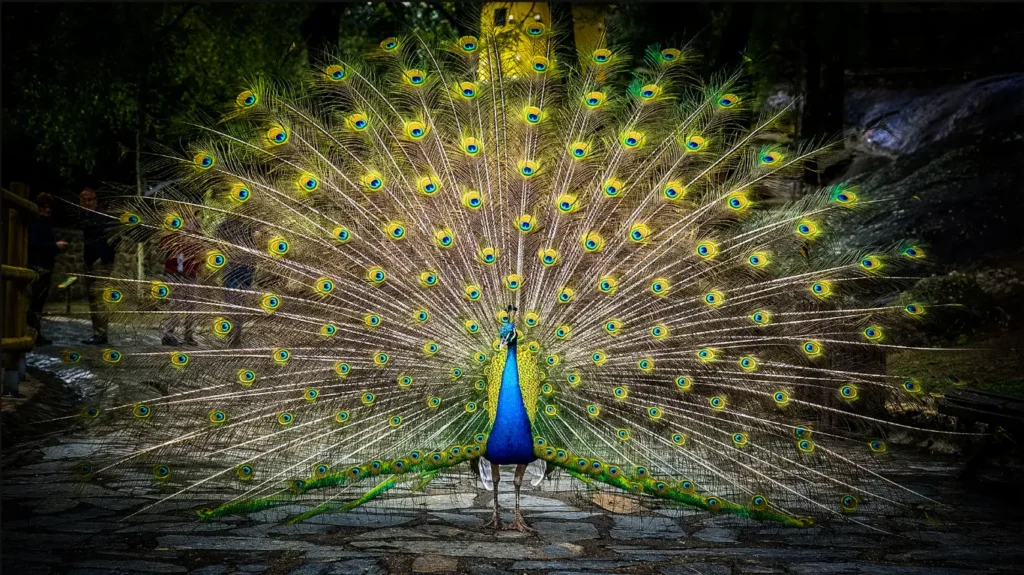
The peacock is a stunning bird with vibrant, colourful tail feathers that fan out beautifully. In India and Sri Lanka, peacocks use their bright plumage to attract mates and scare off predators—their feathers shimmer in the sunlight, creating a mesmerizing effect. Peacocks, symbols of beauty and immortality, live in forests and grasslands and eat plants and animals.
Quick Facts:
- Significance: Symbol of beauty and immortality.
- Behaviour: Males display tail feathers to attract mates.
- Diet: Seeds, insects, fruits.
- Habitat: Forests and grasslands.
- Best Places to Watch: India and Sri Lanka.
- Best Seasons to Watch: Spring.
2. Mandarin Duck (Aix galericulata)

The Mandarin Duck, native to East Asia, is a bird that captivates with its striking colors and patterns. Males, especially, are eye-catching with their orange ‘sails’ and multi-colored feathers. These ducks, often found in wooded ponds, are known for their solid behavior when pairing. Their unique appearance and beauty make them a favorite among bird enthusiasts.
Quick Facts:
- Significance: Symbol of love and fidelity in Chinese culture.
- Behaviour: they are known for their monogamous pairing, a behaviour that intrigues many birdwatchers.
- Diet: Seeds, plants, insects, small fish.
- Habitat: Wooded ponds and marshes.
- Best Places to Watch: China, Japan, Korea.
- Best Seasons to Watch: Spring and Summer.
The Vibrant Knysna Turaco
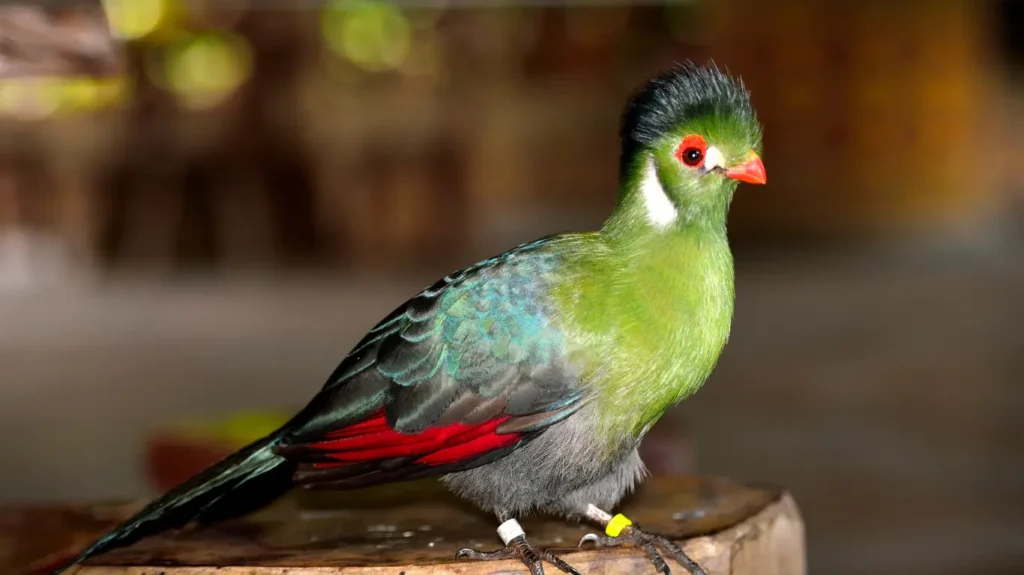
The Knysna Turaco (Tauraco corythaix) is a striking bird known for its vivid green plumage and bright red wing feathers. Native to the forests of South Africa, this bird is a symbol of the region’s rich biodiversity. Its unique coloration is due to a pigment called turacine, which is found only in turacos.
Knysna Turacos are arboreal, spending most of their time in the tree canopy where they forage for fruit, their primary diet. They have a distinctive call that echoes through the forest, adding to the ambiance of their lush habitats. Their strong legs and feet enable them to move agilely among the branches.
Quick Facts About the Vibrant Knysna Turaco
- Scientific Name: Tauraco corythaix
- Family: Musophagidae
- Habitat: Forests and woodlands of South Africa
- Diet: Primarily fruit, also eats leaves and insects
- Appearance: Bright green plumage with red wing feathers
- Size: About 16 to 18 inches (40 to 45 cm) in length
- Weight: Approximately 8 to 9 ounces (220 to 260 grams)
- Call: Loud, guttural croaking sound
- Flight: Strong, capable of agile movement among trees
- Social Structure: Often seen in pairs or small family groups
- Reproduction: Lays 2 to 3 eggs per clutch; both parents care for the young
- Role in Ecosystem: Seed disperser, contributing to forest regeneration
- Conservation Status: Least Concern, but threatened by habitat loss
These quick facts highlight the key characteristics and ecological importance of the Knysna Turaco.
3. Scarlet Macaw (Ara macao)

The Scarlet Macaw is one of the most colorful members of the parrot family. Native to Central and South America, these birds are known for their brilliant red, blue, and yellow feathers. Their intelligence and beauty have made them popular in both the wild and in captivity.
Quick Facts:
- Significance: Important in Mayan and Aztec cultures.
- Behavior: Social and intelligent; strong pair bonds.
- Diet: Fruits, nuts, seeds.
- Habitat: Tropical rainforests.
- Best Places to Watch: Amazon Basin.
- Best Seasons to Watch: Year-round.
4. Resplendent Quetzal (Pharomachrus mocinno)
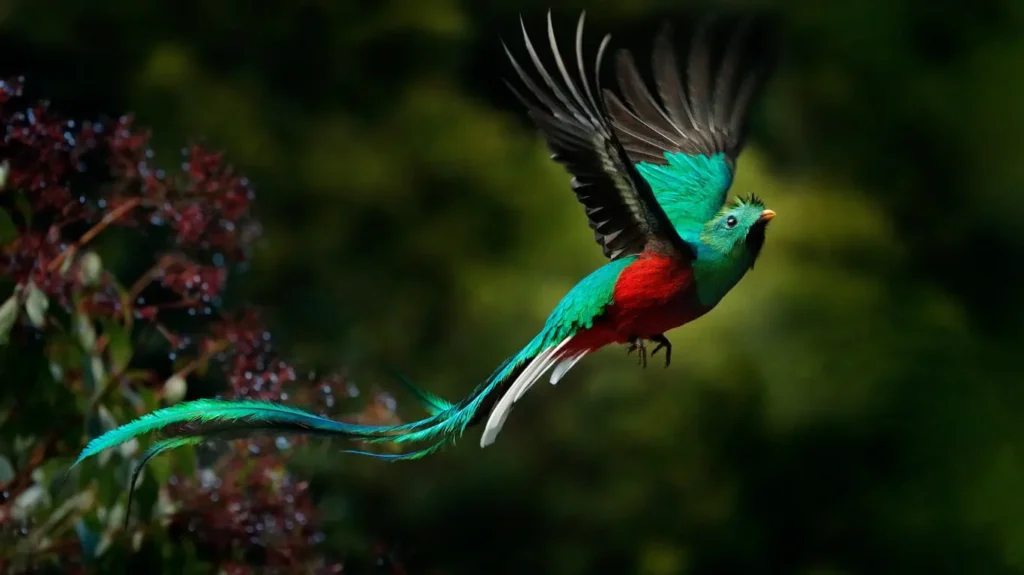
The Resplendent Quetzal is a symbol of beauty in Mesoamerican cultures. Its feathers are iridescent green and red, and its long tail feathers make it unique. This bird is found in the cloud forests of Central America. It is a rare species and is highly treasured. The Quetzal’s beauty and cultural significance make it a sought-after sight for birdwatchers.
Quick Facts:
- Significance: Symbol of freedom and wealth in Mesoamerican cultures.
- Behavior: Solitary; males display long tail feathers during breeding.
- Diet: Fruits, insects, small vertebrates.
- Habitat: Cloud forests.
- Best Places to Watch: Costa Rica, Guatemala.
- Best Seasons to Watch: March to June.
5. Atlantic Puffin (Fratercula arctica)

The Atlantic Puffin is known for its black-and-white plumage and colourful beak. These seabirds breed on coastal cliffs and islands in the North Atlantic. Puffins are excellent swimmers. They use their wings to ‘fly’ underwater while hunting for fish. Their unique appearance and behaviours make them a favourite among birdwatchers. They are symbols of the North Atlantic and are often seen during breeding.
Quick Facts:
- Significance: Symbol of the North Atlantic.
- Behaviour: Breeds in large colonies; nests in burrows.
- Diet: Fish and marine invertebrates.
- Habitat: Coastal cliffs and islands.
- Best Places to Watch: Iceland, Norway, Faroe Islands.
- Best Seasons to Watch: April to August.
The Brilliant Gouldian Finch

The Gouldian Finch (Erythrura gouldiae), also known as the Lady Gouldian Finch, is a small, vividly colored bird native to the savannas and woodlands of Northern Australia. Renowned for its striking appearance, the Gouldian Finch features a dazzling array of colors, including vibrant shades of red, yellow, green, blue, and black. This extraordinary plumage makes it one of the most beautiful birds in the world.
Male Gouldian Finches are typically more brightly colored than females, a trait that plays a crucial role during courtship displays. These birds are highly social and often seen in flocks, foraging for seeds and insects. Their diet primarily consists of grass seeds, which they skillfully extract from seed heads.
Quick Facts About the Brilliant Gouldian Finch
- Scientific Name: Erythrura gouldiae
- Family: Estrildidae
- Habitat: Savannas and woodlands of Northern Australia
- Diet: Primarily grass seeds, also insects
- Appearance: Vibrant plumage in shades of red, yellow, green, blue, and black
- Size: About 5 to 6 inches (12 to 15 cm) in length
- Weight: Approximately 0.5 ounces (14 grams)
- Social Structure: Highly social, often seen in flocks
- Reproduction: Lays 4 to 8 eggs per clutch; both parents incubate and feed chicks
- Lifespan: Up to 8 years in captivity
- Conservation Status: Near Threatened due to habitat loss and disease
- Role in Ecosystem: Seed disperser, contributing to grassland health
These quick facts provide a concise overview of the Gouldian Finch’s key characteristics and ecological role.
7. Kingfisher (Alcedo atthis)
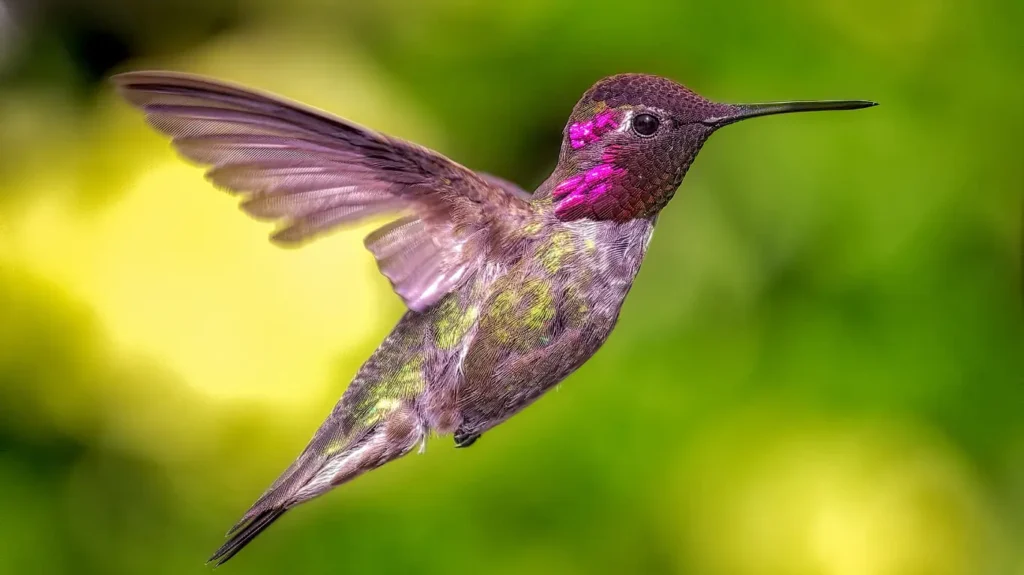
Kingfishers, small birds with bright blue and orange feathers, are often found near rivers and coasts. These excellent hunters dive into the water to catch fish, a behavior that adds to their charm. They are symbols of peace and prosperity, solitary hunters usually seen year-round in their habitats. Wilson’s Bird-of-Paradise, found in New Guinea, is famous for its vibrant colors and courtship dances. The males, with their bright red, yellow, and blue feathers, perform intricate dances to attract females, a behavior that showcases their beauty and agility.
Quick Facts:
- Significance: Symbol of peace and prosperity.
- Behavior: Solitary hunters are known for diving to catch fish.
- Diet: Fish, crustaceans, insects.
- Habitat: Rivers, lakes, coastal areas.
- Best Places to Watch: Europe, Asia, Africa.
- Best Seasons to Watch: Year-round.
8. Paradise Tanager (Tangara chilensis)

The Paradise Tanager, a riot of colors, mixes bright blue, green, and yellow feathers. Native to the tropical rainforests of South America, these birds are often seen in flocks, their vibrant colors making them stand out. The Golden Pheasant, native to the forests of western China, is known for its bright golden and red plumage. The male’s long tail feathers are particularly impressive, adding to their striking looks. Both these birds, with their unique colors, are a true wonder to watch in their natural habitats.
Quick Facts:
- Significance: Known for vibrant colors and social behavior.
- Behavior: Social; often seen in mixed-species flocks.
- Diet: Fruits, insects.
- Habitat: Tropical rainforests.
- Best Places to Watch: Amazon Basin.
- Best Seasons to Watch: Year-round.
9. Golden Pheasant (Chrysolophus pictus)
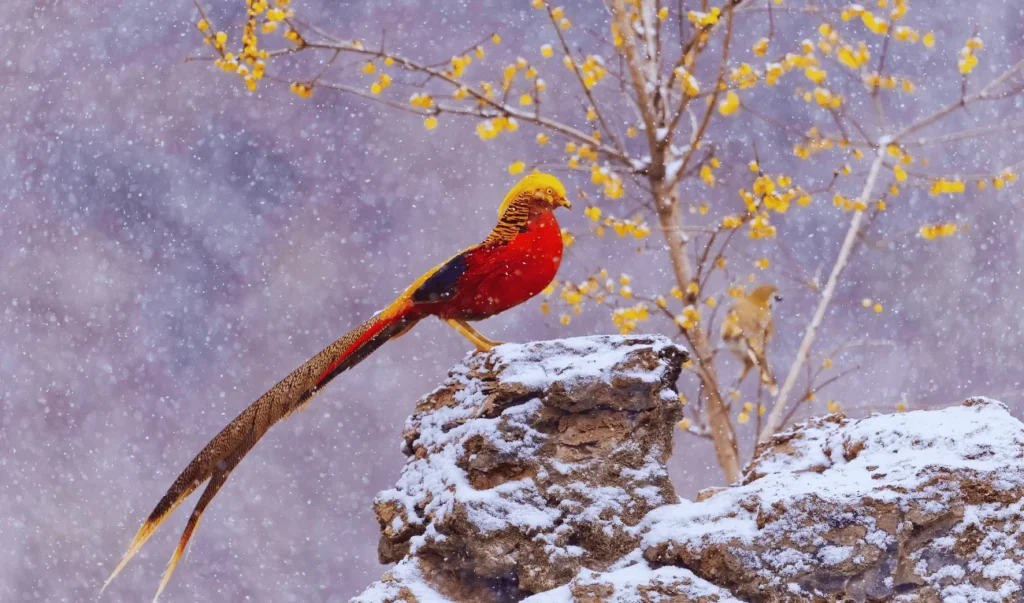
The Golden Pheasant is native to the forests of western China. It is known for its bright golden and red plumage. The male’s long tail feathers are particularly impressive. These birds are often kept in aviaries due to their striking looks. They symbolize good fortune and beauty in Chinese culture. Golden Pheasants are ground-dwelling birds, making them easier to observe.
Quick Facts:
- Significance: Symbol of good fortune and beauty in Chinese culture.
- Behavior: Ground-dwelling; males display long tail feathers during courtship.
- Diet: Seeds, leaves, insects.
- Habitat: Forests and shrublands.
- Best Places to Watch: Western China.
- Best Seasons to Watch: Year-round.
10. Wilson’s Bird-of-Paradise (Cicinnurus ResPublica)

Wilson’s Bird-of-Paradise is famous for its vibrant colors and courtship dances. Found in New Guinea, the male has bright red, yellow, and blue feathers. Their mating displays are a fascinating spectacle. These displays showcase their beauty and agility. They are known for their elaborate dances and are a true wonder to watch in their natural habitat.
Quick Facts:
- Significance: Known for elaborate courtship displays.
- Behavior: Males perform intricate dances to attract females.
- Diet: Fruits, insects.
- Habitat: Rainforests of New Guinea.
- Best Places to Watch: West Papua, Indonesia.
- Best Seasons to Watch: Varies by location.
11. Victoria Crowned Pigeon (Goura victoria)

The Victoria Crowned Pigeon is an elegant bird with blue-grey plumage and a crown of feathers. It is the largest pigeon species native to New Guinea. It’s regal appearance and calm demeanor make it a favorite in zoos and aviaries. These pigeons are social birds. They are often seen in pairs or small groups in their natural habitat.
Quick Facts:
- Significance: Largest pigeon species; known for regal appearance.
- Behavior: Social; often seen in pairs or small groups.
- Diet: Fruits, seeds.
- Habitat: Lowland rainforests.
- Best Places to Watch: New Guinea.
- Best Seasons to Watch: Year-round.
12. The Mysterious Barn Owl
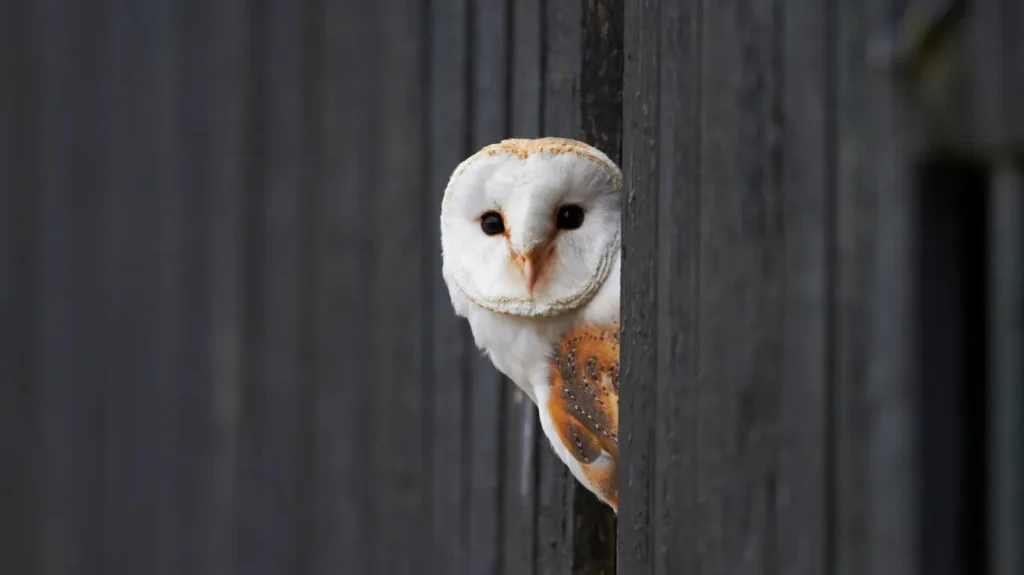
The Barn Owl (Tyto alba) is a captivating bird known for its distinctive heart-shaped face and ghostly appearance. With its pale feathers and silent flight, the Barn Owl evokes a sense of mystery and intrigue. These nocturnal hunters are found on every continent except Antarctica, thriving in a variety of habitats including farmlands, woodlands, and urban areas.
Quick Facts:
- Significance: Symbol of wisdom and mystery.
- Behavior: Solitary; hunts primarily during the day.
- Diet: Small mammals, birds.
- Habitat: Arctic tundra.
- Best Places to Watch: Northern Canada, Alaska, Scandinavia.
- Best Seasons to Watch: Winter (for southern migrations).
13. Keel-billed Toucan (Ramphastos sulfuratus)

The Kell-Billed Toucan is known for its large, colorful beak. Found in the rainforests of Central and South America, its plumage is black with bright yellow, orange, and green accents. Toucans are social birds, often seen in flocks. Their unique calls and vibrant appearance make them a highlight of the rainforest.
Quick Facts:
- Significance: Known for the distinctive beak and social Behavior.
- Behavior: Social; often seen in flocks.
- Diet: Fruits, insects, small reptiles.
- Habitat: Tropical rainforests.
- Best Places to Watch: Central and South America.
- Best Seasons to Watch: Year-round.
14. African Grey Parrot (Psittacus erithacus)
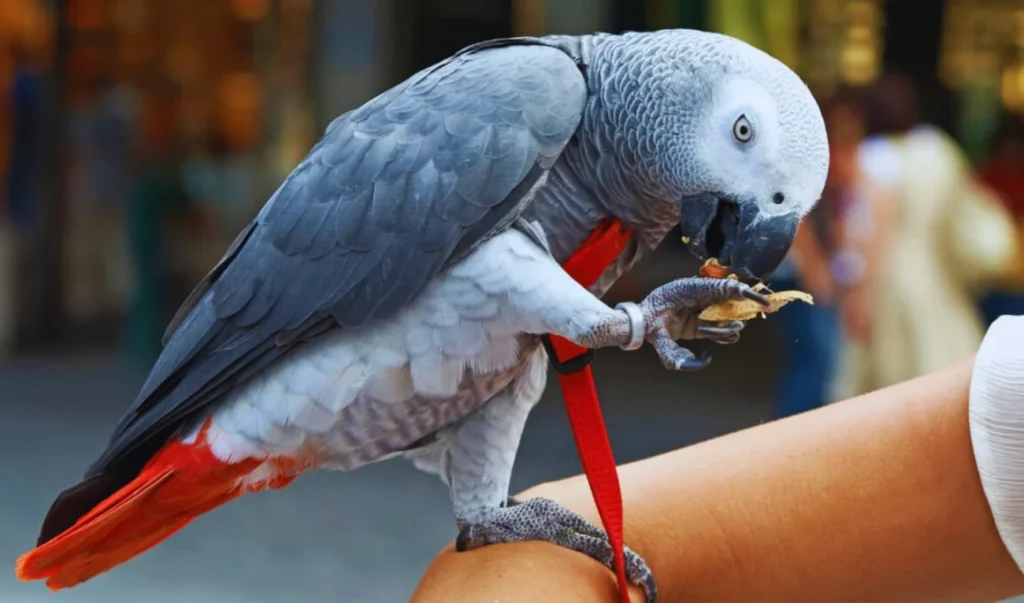
The African Grey Parrot is brilliant, with sleek grey feathers and a bright red tail. It is native to the rainforests of West and Central Africa. These parrots can mimic human speech and form strong bonds with their owners. Their intelligence and ability to mimic sounds make them popular pets worldwide.
Quick Facts:
- Significance: Known for intelligence and mimicry.
- Behavior: Social; forms strong pair bonds.
- Diet: Seeds, nuts, fruits.
- Habitat: Rainforests.
- Best Places to Watch: West and Central Africa.
- Best Seasons to Watch: Year-round.
15. Grey Crowned Crane
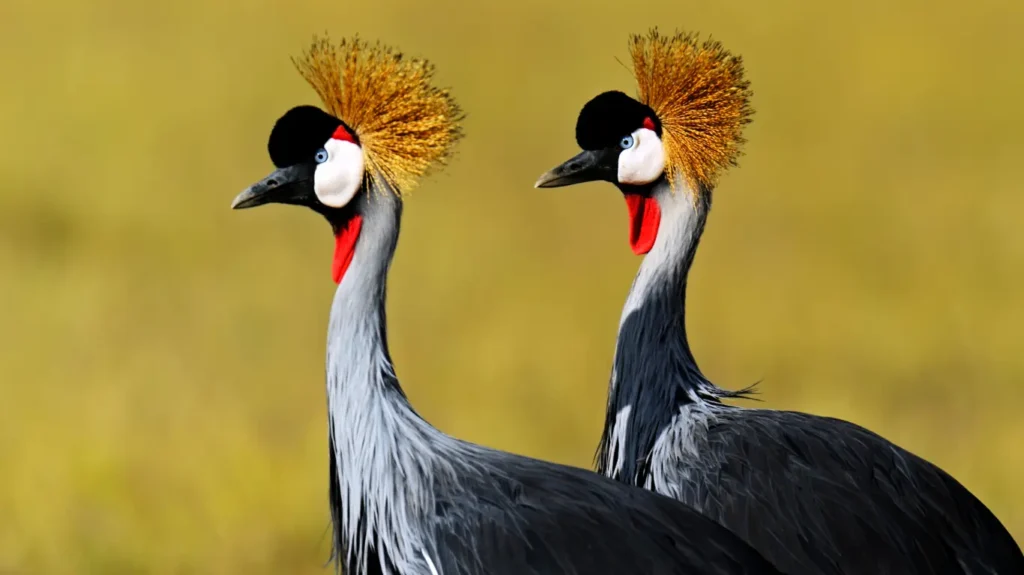
The Grey Crowned Crane, native to Eastern and Southern Africa, is easily recognizable by its golden crown of feathers. This bird symbolizes elegance and grace with its long legs, delicate build, and distinctive dancing displays during courtship.
Quick Facts About the Majestic Grey Crowned Crane
- Scientific Name: Balearica regulorum
- Family: Gruidae
- Habitat: Wetlands, grasslands, and savannas in Eastern and Southern Africa
- Diet: Omnivorous; insects, small vertebrates, seeds, and grasses
- Appearance: Golden crown of feathers, long legs, grey body, white wings with colorful accents
- Courtship Display: Elaborate dancing with bowing, jumping, and flapping wings
- Size: Approximately 3.3 feet (1 meter) tall
- Wingspan: Up to 6.5 feet (2 meters)
- Nesting: Builds nests in wetlands, typically lays 2-3 eggs
- Lifespan: Up to 22 years in the wild
- Conservation Status: Endangered due to habitat loss and human disturbance
- Cultural Significance: Symbolizes elegance, grace, and longevity in various African cultures
16. Hyacinth Macaw (Anodorhynchus hyacinthinus)
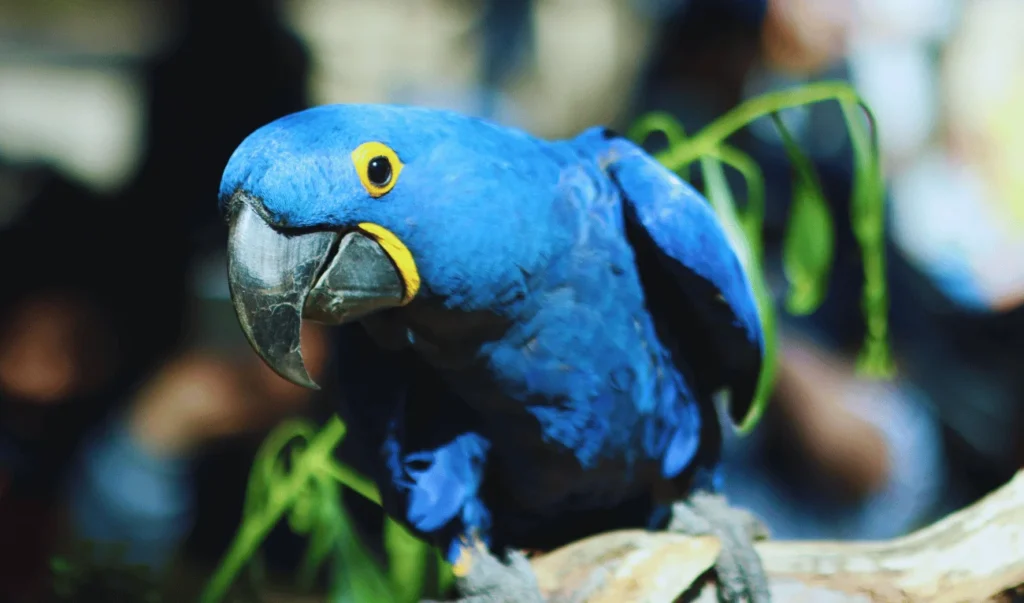
The Hyacinth Macaw is the largest parrot species. It has deep blue feathers and yellow eye-rings. Native to the Brazilian Pantanal region, these macaws are known for their solid beaks and playful behavior. Their striking appearance and gentle nature make them popular in aviculture.
Quick Facts:
- Significance: Largest parrot species; known for its striking appearance.
- Behavior: Social; strong pair bonds.
- Diet: Nuts, seeds, fruits.
- Habitat: Pantanal wetlands.
- Best Places to Watch: Brazil.
- Best Seasons to Watch: Year-round.
17. Northern Cardinal (Cardinalis cardinalis)

The Northern Cardinal is a vibrant red bird with a distinctive crest in North America’s woodlands. Males are particularly striking, while females have a more subdued coloration. Cardinals are known for their melodic songs and are a favorite among backyard birdwatchers.
Quick Facts:
- Significance: Symbol of beauty and vitality.
- Behavior: Territorial; known for melodious songs.
- Diet: Seeds, fruits, insects.
- Habitat: Woodlands and gardens.
- Best Places to Watch: North America.
- Best Seasons to Watch: Year-round.
18. Rainbow Lorikeet (Trichoglossus moluccanus)

The Rainbow Lorikeet is a vividly colored bird with red, blue, green, and yellow feathers. It is found in the Australasian regions and is known for its playful behavior and strong social bonds. It is often seen in large flocks, feeding on nectar and fruits.
Quick Facts:
- Significance: Known for vibrant colors and playful behavior.
- Behavior: Social; often seen in flocks.
- Diet: Nectar, fruits, insects.
- Habitat: Rainforests, woodlands.
- Best Places to Watch: Australia, Papua New Guinea.
- Best Seasons to Watch: Year-round.
19. Andean Cock-of-the-Rock (Rupicola peruvianus)

The Andean Cock-of-the-Rock is a bright orange-red bird with a unique head shape, found in the cloud forests of the Andes. Males perform elaborate courtship displays to attract females, making them one of the most visually striking birds in the region. Their vibrant colors and distinctive appearance make them a favorite among birdwatchers.
Quick Facts:
- Significance: Known for elaborate courtship displays.
- Behavior: Males perform intricate dances to attract females.
- Diet: Fruits, insects.
- Habitat: Cloud forests.
- Best Places to Watch: Andes Mountains.
- Best Seasons to Watch: Breeding season (varies by location).
20. Splendid Fairywren (Malurus splendens)

The Splendid Fairywren is an iridescent blue and turquoise bird found in Australia’s scrublands. These small, agile birds are known for their energetic movements and striking plumage. Males often display their bright colors during the breeding season to attract mates.
Quick Facts:
- Significance: Known for vibrant colors and energetic behavior.
- Behavior: Social; often seen in small groups.
- Diet: Insects, seeds.
- Habitat: Scrublands.
- Best Places to Watch: Australia.
- Best Seasons to Watch: Breeding season (spring to summer).
Conservation Efforts
Despite their beauty, many of these birds face significant threats due to habitat loss, climate change, and poaching. Deforestation and urbanization have reduced the natural habitats of many species, leading to declining populations. Climate change has altered migration patterns and breeding seasons, further endangering these birds.
Various programs and organizations are dedicated to conserving these beautiful birds. Initiatives like the World Wildlife Fund (WWF) and BirdLife International work tirelessly to protect habitats and promote sustainable practices. Success stories, such as the Bald Eagle’s recovery, demonstrate these efforts’ effectiveness.
Conclusion
The beauty of these birds is a testament to the wonders of the natural world. Their vibrant colors, unique features, and cultural significance make them worthy of admiration and protection. By appreciating their beauty, we can better understand the need for conservation efforts.
We encourage you to support bird conservation initiatives and contribute to preserving these magnificent creatures. Whether through donations, volunteering, or spreading awareness, every effort counts.
Birds are living symbols of nature’s beauty and diversity. By protecting them, we ensure that future generations will continue to be inspired by their splendor. Let’s celebrate and conserve the world’s most beautiful birds together.

